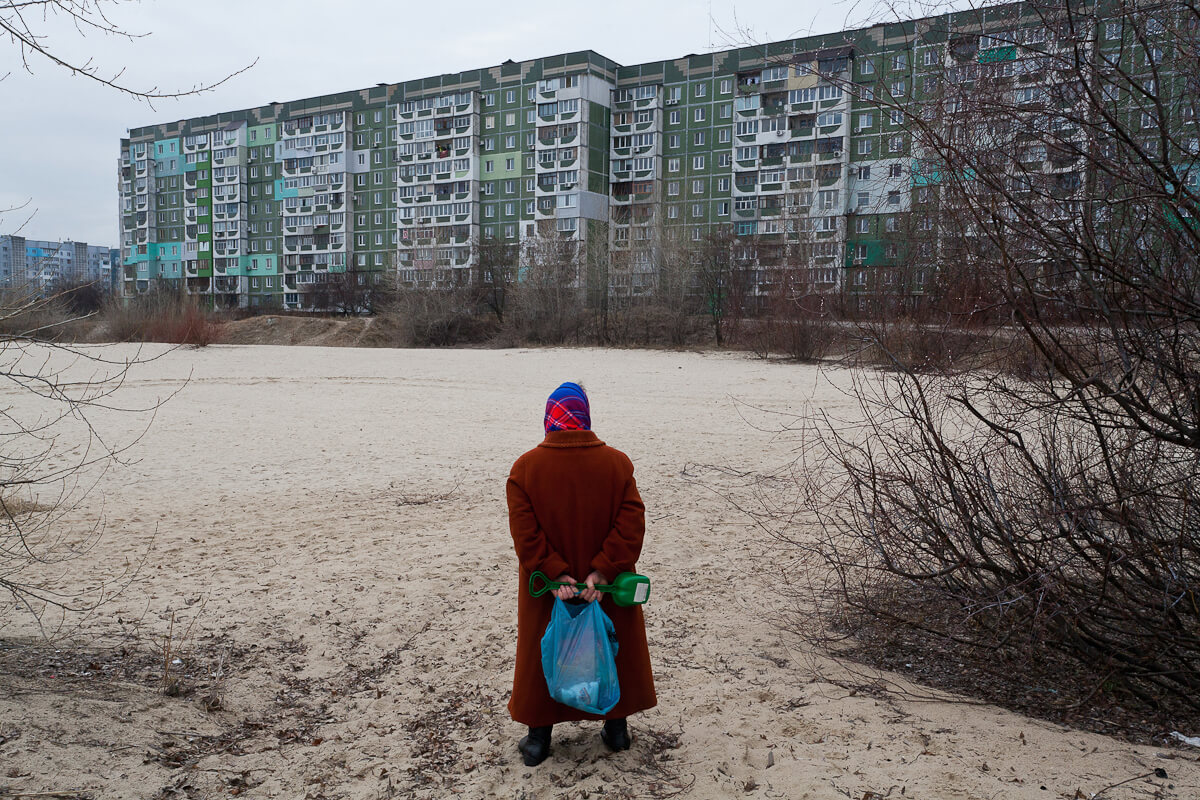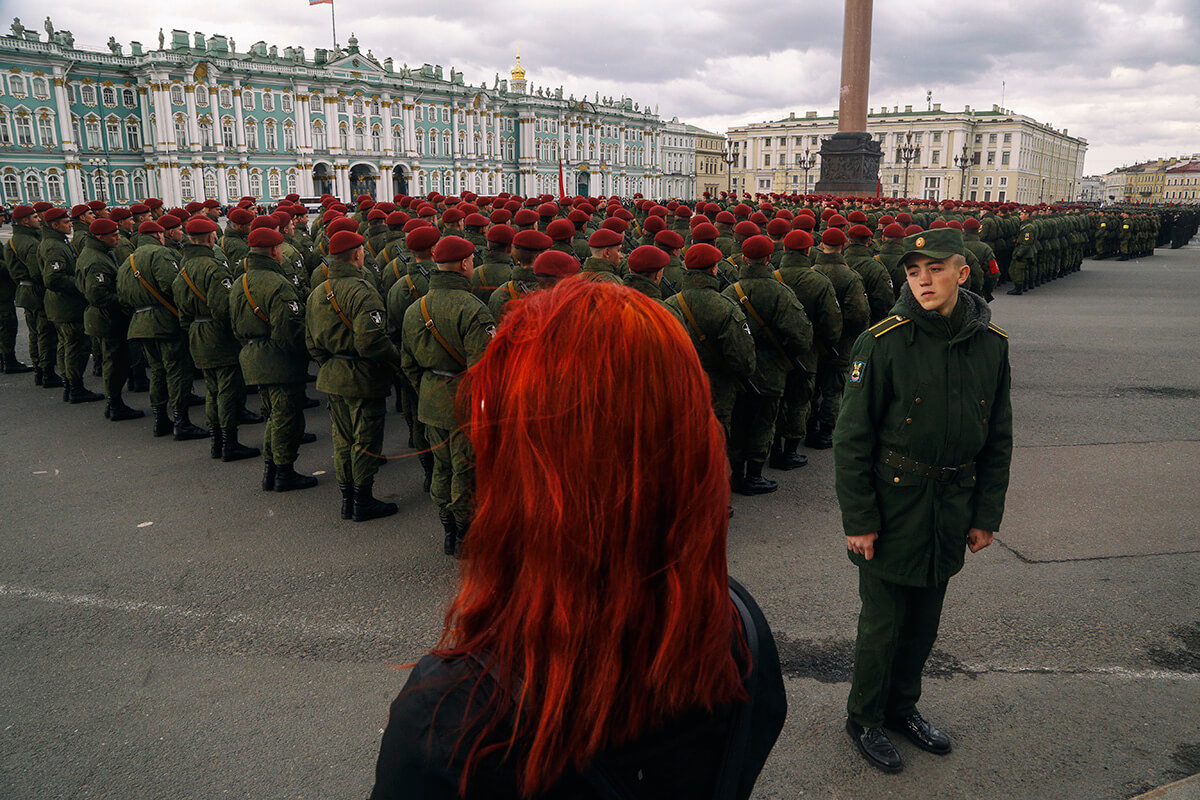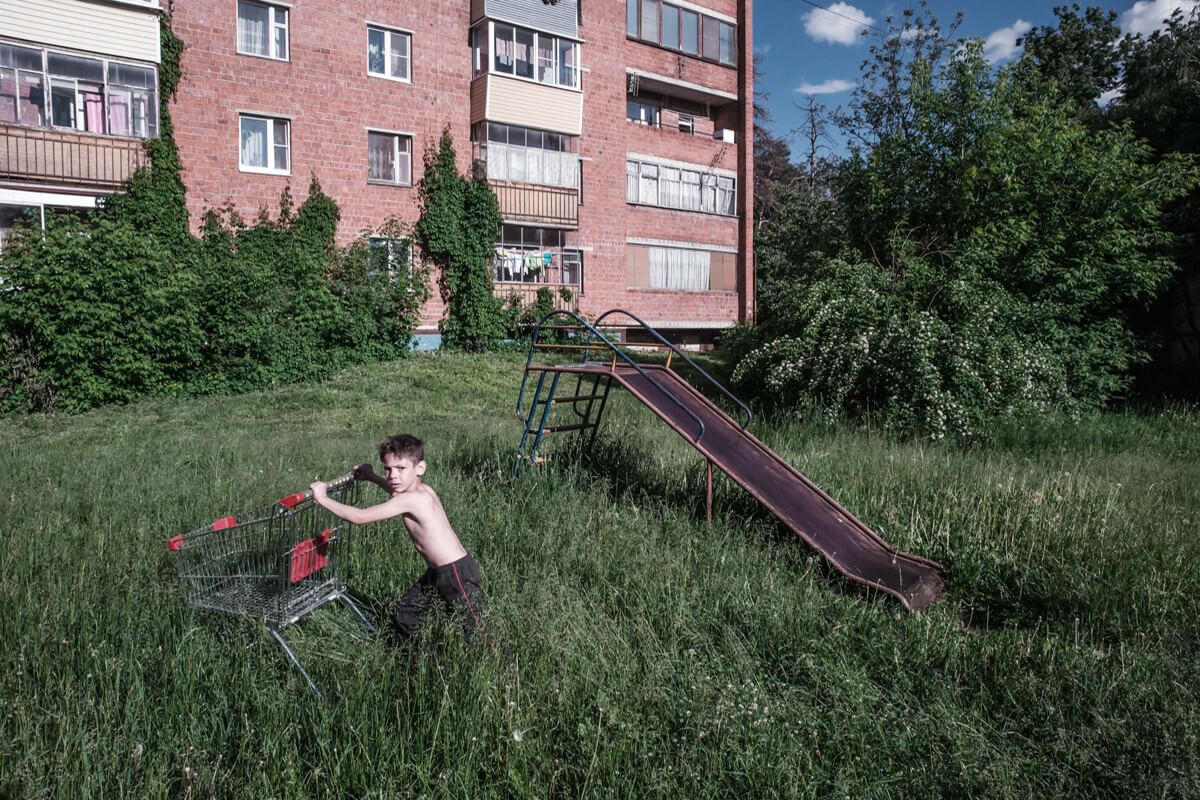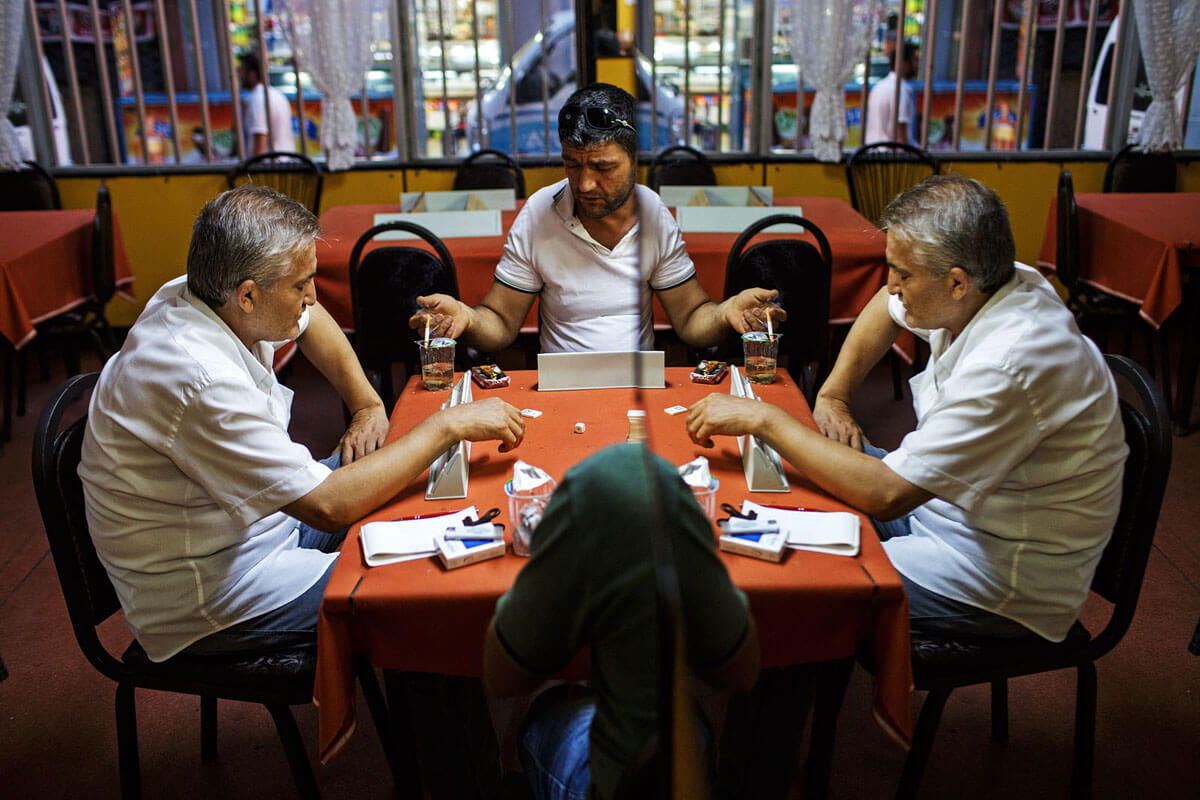Taking the “Eastreet”: A homegrown photography exhibition finds local and international success6 min read
The city of Lublin, Poland can best be described as a city of change; its increase in living standards is a relatively new phenomena of the past 10 years, set under the backdrop of a turbulent past. This revival of the city has resulted in (and has been fostered by) a nurturing of art and culture. Among the iconic landmarks of Lublin now stands the Centrum Spotkania Kultur, or The Center for the Meeting of Cultures. The structure is chic and modern, holding exhibitions and performances that draw people locally, nationally and internationally. One exhibition that the Centrum held caught my attention in particular: Eastreet, a photography exhibition showcasing Eastern Europe by photographers who experienced the region through their own eyes.
Many of us look at the East through our own lenses and for our own reasons. We might be academically entwined in the region; our roots might be deep beneath its soil, soaking up whatever information might be relevant for our own identity; or we look towards the East out of pure curiosity. No matter what your relationship is with Eastern Europe, Eastreet is an initiative that is meant to question your perceptions of it through professional photography. Its last iteration in 2017, “Eastreet 4,” was overwhelmingly well received; over 11,000 submissions were sent in, and more than 4,000 people came to visit it in Lublin. I got in touch with two guys behind the project: Tomasz Kulbowski, the mastermind behind Eastreet, and Bartosz Wójcik, the man at the Centrum who made it happen.

Photo by: Garry Efimov
“You ask so many questions about Eastreet that are difficult to answer,” Tomasz laughed. “It is really just my own project. We don’t really make money from Eastreet. I work two jobs to make my money.”
For Tomasz, Eastreet is a passion with goals driving it forward. “Many of us here don’t know what life is like in our own neighborhood,” he said. To showcase this, Tomasz calls upon others to present the East in his preferred medium – photography. “There’s still a debate on whether photography should be called art. Everyone can take pictures on their smartphones now. But pictures also are a means of communication, and we forget that.”

Photo by: Ilya Shtutsa
Eastreet is also a way for Tomasz to bring photography to his hometown. “If you want professional photography exhibitions, you have to travel to Warsaw, to Kraków, to Łodź, to Berlin. There’s not really a professional photography culture here outside of a few small galleries. It’s kind of just me trying to start something at the moment.”
To many, the term “Eastern Europe” might seem vague and even controversial at times. “The United Nations has around 12 definitions of ‘Eastern Europe,’” Tomasz recalled. “They’re all for different uses. One for economics, one for demographics, and so on.” Their solution: create their own definition of Eastern Europe, including post-Soviet countries and, possibly even more controversially, Turkey. “It’s on the edge of Europe. It’s where Europe ends, and consequently you get a lot of cultures coming together in one place.”
 Photo by Andrey Gontarev
Photo by Andrey Gontarev
While the last Eastreet brought in over 11,000 submissions, a long selection process dwindled this number down to a mere 100 photos. Each of these 100 photos follow a theme that Tomasz and his colleagues decide much later. “We don’t know what the theme will be beforehand,” Tomasz told me. The selection process takes around 6 months, and by the end of it the panel recognizes an overarching similarity between all the pictures. “This past year’s exhibition ended up revolving around travel and movement.”
Many of the photos from last year’s collection move as if they weren’t still shots at all. One immediately feels a sense of eagerness when looking at them, as if at any moment one might be taken to the next frame and witness the story unfold further.
One of my favorite photos of the collection comes from Maciej Dakowicz. A group of elderly men huddle around a backgammon board, deep into their match. Above the board floats a white blur, a football, kicked by a group of children nearby. Onlookers sitting on some nearby steps watch the spectacle unfold, and the children themselves look on in horror, as if they already fear the consequences of the chaos they wrought. The elderly men are blissfully unaware of how their match, their reward for years of success, struggle, love and heartbreak, is about to come to an end.

Photo by Maciej Dakowicz
But this is just the story I see. It’s up to the viewer to decide.
Not only was there an exhibition; on the first weekend, the Centrum held workshops for photographers to improve their art and show off work they had done. “It really was like a mini festival,” Tomasz said.
While Eastreet had its most recent success in Lublin, the exhibition is also international in nature; 8 countries have hosted the Eastreet exhibition in various iterations. This has primarily stayed in Eastern Europe, with the exception of finding itself displayed in far-flung Thailand. This is not coincidental; Tomasz has lived on and off in Thailand for years now, with friends and fellow photographers in the country. “The people there were really interested in our photography,” he recalled. “We might see pictures of soldiers marching on the Red Square and think nothing of it, for example, but some of these images were entirely new for them.”

Photo by: Maciej Dakowicz
Although Eastreet is planned to be mainly based out of Lublin, there is ambition to expand further westward. “We’re hoping to get our exhibit in Berlin, and possibly London or France,” Bartosz told me. Spreading to the West would allow Eastreet to express Eastern Europe in a unique and personal manner to Western audiences.
All of this rides on the waves of Eastreet’s most recent success that took those behind it by surprise. “You know, it was a more artistic exhibition,” Bartosz said. “We didn’t have any interactive displays that usually draw in families or broader audiences.” The focus was straight-forward: photography. When the exhibition went international, it stayed minimalistic in its nature; photos were kept in smaller frames for ease of transport. “All the photos can fit into a few boxes I can put in the trunk of my Volvo,” Tomasz recounted. “When we went to Thailand, we couldn’t bring the photos with us, so we printed out part of our exhibition there. Bringing them would have been too expensive.”
 Photo by Bianca Binisch
Photo by Bianca Binisch
Those of us who study the region of “Eastern Europe” sometimes fall too far deep into the black hole of books, articles and scholarly journals. And some of us simply interested in the region might find ourselves falling back into our own preconceived notions. Initiatives like Eastreet can project a reality of the East that enlightens us, tingles our emotions, and transports us to familiar and unfamiliar moments in life, if only for an instant. For the people of Lublin and the outlying area, Eastreet creates a space for learning and sharing new perspectives on their immediate neighborhood. For photographers, new opportunities arise to challenge their artistic abilities, provide a place to showcase their work and network with other artists. Cultivating passion takes passionate people, and Tomasz’s work on Eastreet shows us how the realization of a lifelong passion can help a city and a community to prosper.
More information on Eastreet can be found on the exhibition’s website, http://eastreet.eu.




